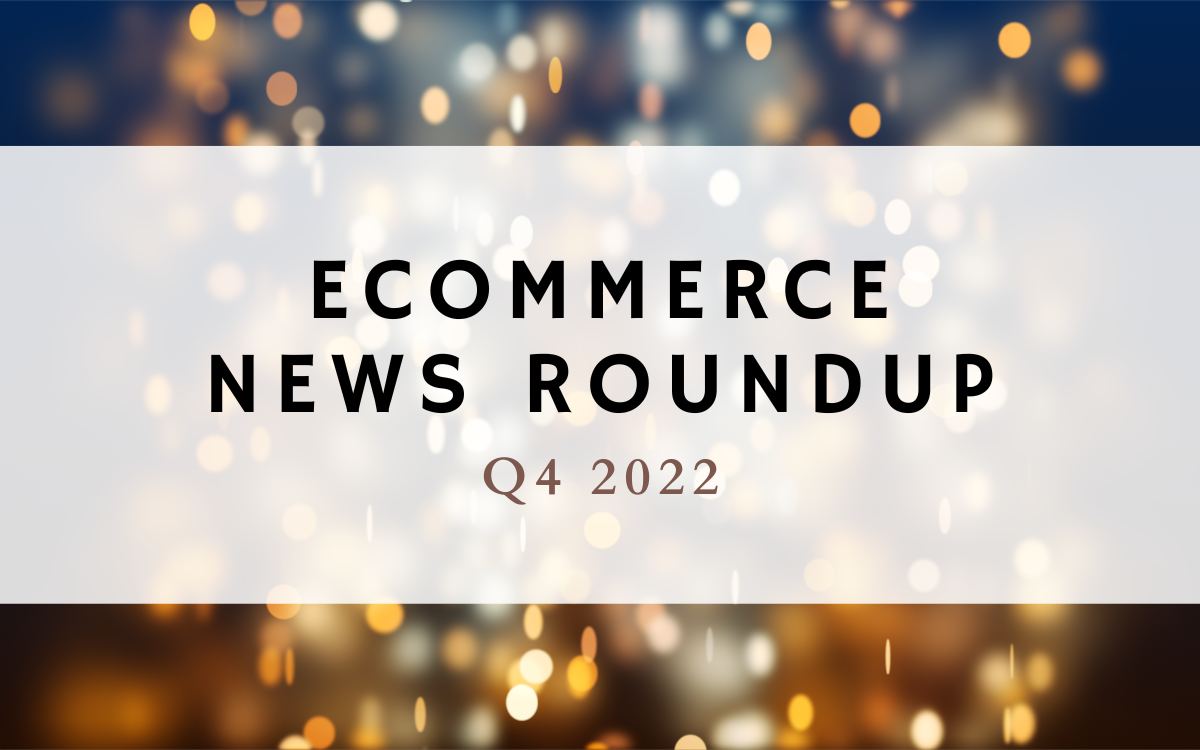
What's been happening in ecommerce as the year comes to a close? Below, we take a look through the top five ecommerce news stories of the fourth quarter of 2022.
1. Ecommerce shipping: FedEx, UPS face financial pressure
Shipping costs have been on the rise recently in an effort by companies to elicit gains in stock price and profitability. Facing dropping stock prices, FedEx plans to cut costs by reducing the flight frequency of its Airmail Express service, closing sort operations for FedEx Ground, and other measures. The more domestic-focused UPS has also seen their stock prices dropping, but is still proven to be an attractive option for SMBs. As shipping volumes decrease, it remains to be seen who will cut shipping prices first to attract more customers. (Read the full article on The Current.)
2. Supply chain shocks bring new push for resilience, sustainability
Supply chain issues over the past three years have put retailers in a bind with delayed orders and rising shipping costs. While backed-up shipping ports aren’t an issue at the moment, other issues like material shortages still are. These issues, among others, have raised awareness of one main problem: the current supply chain construction is outdated and in need of revamping; international tensions, climate change, and the pandemic have highlighted the need to shift toward resiliency and sustainability. (Read the full article on The Current.)
3. Becoming indispensable: Moving past e-commerce to NeXT commerce
Ecommerce companies looking to ride the next wave should no longer view digital commerce as a “bolt-on” to the main business, but as their main avenue for pleasing customers and maximizing sales. A study conducted by McKinsey & Company found that:
- There are six global forces exerting pressure on old business models
- Successful businesses are learning how to become “indispensable” to their customers
- Companies are avoiding hard choices—and thus, greater potential value—when it comes to making changes
To achieve what McKinsey & Co. has branded as “NeXT commerce," businesses must invest deeper in digital engagement and focus on the customer above all else. (Read the full article on McKinsey & Company.)
4. Black Friday 2022 e-commerce reaches record $9.12B, Thanksgiving $5.3B; BNPL and mobile are big hits
With the pandemic appealing to be waning, online holiday shopping was expected to cool down during the holiday season this year. However, Black Friday set a record $9.12 billion in online sales, with most sales occurring in the toys, gaming, and consumer electronics verticals, according to Adobe Analytics. Overall, data shows that most consumers waited to make purchases until the items they wanted were heavily discounted for the holiday shopping weekend, with Buy Now, Pay Later payment options also experiencing a boost in usage. (Read the full article on TechCrunch.)
5. The Demise Of E-Commerce Is Greatly Exaggerated
On the surface, declining ecommerce growth rates appear to indicate a gradual demise of the industry. However, this concept only takes into account a narrow view of the industry. For example, while Amazon’s stock prices have been declining, the company as a whole has much more than just ecommerce at play in their business model. Additionally, some verticals grew in ecommerce temporarily during the pandemic before slowing back down when brick-and-mortar businesses opened; however, other verticals (like groceries) have experienced a permanent ecommerce boost. Overall, where the relative growth of ecommerce in relation to total retails sales may be slowing, the absolute growth continues to accelerate. (Read the full article on Forbes.)











